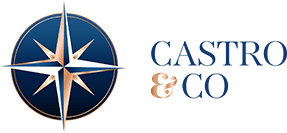Introduction
The Small Business Administration (SBA) has released its guidance with respect to the Paycheck Protection Program (PPP) contained in The CARES Act, which authorizes up to $349 billion in forgivable loans to small businesses to pay their employees during the COVID-19 crisis.
Executive Summary
The newly issued guidance confirms that:
- Loan terms will be the same for all borrowers.
- All businesses — including nonprofits, veterans organizations, Tribal Business concerns, sole proprietorships, self-employed individuals and independent contractors with 500 or fewer employees that were in operation on Feb. 15, 2020 can apply.
- The lender will calculate the eligible loan amount using the tax documents submitted
- Loans carry a 0.50% fixed rate.
- Loans have a two-year term and no prepayment penalty.
- No collateral is required.
- No personal guarantee is required.
- Loan amounts will be forgiven as long as:
- The loan proceeds are used to cover payroll costs, and most mortgage interest, rent and utility costs over the eight-week period after the loan is made*; and
- Employee and compensation levels are maintained.
- Payroll costs are capped at $100,000 on an annualized basis for each employee.
- Loan payments will be deferred for six months.
- The SBA’s affiliation standards are waived for small businesses that:
- are in the hotel and food services industries which fall under NAICS code 72;
- are franchises in the SBA’s Franchise Directory; or
- receive financial assistance from small business investment companies licensed by the SBA.
- Lenders may not collect any fees from the applicants.
Beginning April 3, 2020, small businesses, including nonprofits and sole proprietorships, can apply for and receive loans to cover their payroll and certain other expenses through existing SBA lenders.
Starting April 10, 2020, independent contractors and self-employed individuals can apply for and receive loans to cover their payroll and other certain expenses through existing SBA lenders.
*Importantly the guidance notes that, due to likely high subscription, it is anticipated that not more than 25% of the forgiven amount may be for non-payroll costs. The PPP program is open until June 30, 2020, so businesses are encouraged to apply as quickly as possible as there is a funding cap and lenders will need time to process the loans.
Application Process
Borrowers can apply through any existing SBA lender or through any participating federally insured depository institution, federally insured credit union or Farm Credit System institution. Other regulated lenders will be available to make these loans as soon as they are approved and enrolled in the program. Interested businesses and individuals should consult with your local lender as to whether it is participating. Visit www.sba.gov for a list of SBA lenders.
Applicants will need to complete the Paycheck Protection Program loan application, a sample of which is available on the SBA website, and submit the application with the required documentation to an approved lender that is available to process their application by June 30, 2020. Applicants will need to provide lenders with payroll and tax documentation. There is no requirement that applicants try to obtain some or all of the loan funds from other sources. The sample form requires Applicant Ownership information for any individual owners of a business with greater than 20% ownership stakes, including questions regarding such individuals' criminal history.
PPP Loan Application List:
- 2019 IRS Quarterly 940, 941 or 944 payroll tax reports
- Monthly payroll reports for 2019 (Must show the following:)
- Gross wages for each employee (including the officer(s) if paid W-2 wages)
- Paid time off for each employee
- Vacation pay for each employee
- Family medical leave pay for each employee
- State and local taxes assessed on the employee's compensation for each employee
- 1099s for 2019 for independent contractors that would otherwise be employees of your business. (Do NOT include 1099s for services)
- Documentation showing total health insurance premiums paid by the company owner under a group health plan. (Include all employees and the company owners.)
- Document the sum of all retirement plan funding that was paid by the company owner. (Do not include funding that came from the employees out of their paycheck deferrals.) Include all employees, including company owners, 401K plans, Simple IRA, SEP IRAs.
- Business entity documentation (e.g. operating agreement, certificate of organization, bylaws, articles of incorporation)
- 2017, 2018 and 2019 business tax returns, if applicable, and 2019 internal financial statements if 2019 tax return is not filed
- 2020 interim financial statements (balance sheet, income statement, accounts receivable aging and accounts payable aging)
- Debt schedule for operating business
- List of owners of the business if not included in tax return
- Copy of driver's license for signers of business. (This is likely for 20%+ owners)
Use of Proceeds
Loan proceeds can be used for:
- “Payroll costs,” a defined term that includes all of the following:
- salaries and wages (capped at $100,000 on an annualized basis for each employee);
- payments for vacation, parental, family, medical or sick leave;
- severance payments;
- payments required for the provision of group health care benefits, including insurance premiums;
- retirement benefits; and
- state and local taxes assessed on the compensation of employees.
- Interest (but not principal) on any debt or mortgage obligations that existed prior to Feb. 15, 2020.
- Rent arising under a lease agreement (for both real and personal property) in force before Feb. 15, 2020.
- Utility payments (including electricity, gas, water, transportation, telephone or internet access) for service that began before Feb. 15, 2020.
Payroll costs include:
- Salary, wages, commissions or tips (capped at $100,000 on an annualized basis for each employee);
- Employee benefits including costs for vacation, parental, family, medical or sick leave; allowance for separation or dismissal; payments required for the provision of group health care benefits including insurance premiums; and payment of any retirement benefit;
- State and local taxes assessed on compensation; and
- For a sole proprietor or independent contractor: wages, commissions, income or net earnings from self-employment, capped at $100,000 on an annualized basis for each employee.
Loans can be for up to two months of average monthly payroll costs from the last year plus an additional 25% of that amount. Again, that's two months of payroll plus 25% thereof. That amount is subject to a $10 million cap. Most applicants will use the average monthly payroll for 2019. For a seasonal or new businesses you may elect to instead use average monthly payroll for the time period between Feb. 15, 2019 and June 30, 2019. For new businesses, average monthly payroll may be calculated using the time period from Jan. 1, 2020 to Feb. 29, 2020. Payroll costs will be capped at $100,000 annualized for each employee.
Borrowers will owe money when their loan is due if they use the loan amount for anything other than payroll costs, mortgage interest, rent and utilities payments over the eight weeks after getting the loan. As noted above, due to likely high subscription, it is anticipated that not more than 25% of the forgiven amount may be for non-payroll costs. Again, this loan will effectively be forgiven if it's used properly.
The statute itself does not require any specific allocation of proceeds. However, per recent Small Business Administration (SBA) guidance, borrowers expecting full forgiveness should plan to spend at least 75% of the loan proceeds on “payroll costs.” The sample PPP loan application reiterates this requirement.
Loan Forgiveness
Borrowers can submit a request to the lender that is servicing the loan. The request must include documents that verify the number of full-time equivalent employees and pay rates, as well as the payments on eligible mortgage, lease and utility obligations. Borrowers must certify that the documents are true and that the forgiveness amount was used to keep employees and make eligible mortgage interest, rent and utility payments. The lender must make a decision on the forgiveness within 60 days.
Reduction of Loan Forgiveness
Loan forgiveness will be reduced if:
- Full-time employee headcount is decreased
- Salaries and wages are decreased by more than 25% for any employee who made less than $100,000 annualized in 2019.
Re-Hiring — Borrowers have until June 30, 2020 to restore full-time employment and salary levels for any changes made between Feb. 15, 2020 and April 26, 2020.
Required Certifications in the Application:
- Current economic uncertainty makes the loan necessary to support your ongoing operations.
- Funds will be used to retain workers and maintain payroll or to make mortgage, lease and utility payments.
- Borrower has not and will not receive another loan under this program.
- Borrower will provide to the lender documentation that verifies the number of full-time equivalent employees on payroll and the dollar amounts of payroll costs, covered mortgage interest payments, covered rent payments and covered utilities for the eight weeks after getting this loan.
Additional Information
Sample Paycheck Protection Program Loan Application.
SBA Paycheck Protection Program Homepage.
Bluebook Citation: SBA Paycheck Protection Program Guidance, Int’l Tax Online Law Journal (Mar. 30, 2020) url.


